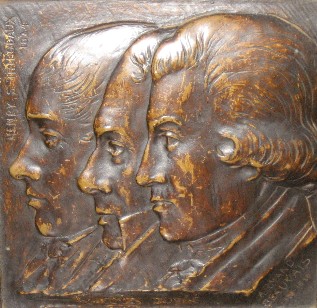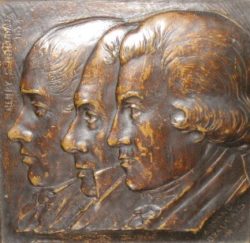Arnaud Julie Beauvais
Planter Arnaud Beauvais became acting governor of Louisiana from October 6, 1829, to January 14, 1830

Courtesy of State Library of Louisiana
Arnaud Julie Beauvais. Unknown
P lanter Arnaud Beauvais became acting governor of Louisiana from October 6, 1829, to January 14, 1830. He replaced former governor Pierre Derbigny who died unexpectedly after being thrown from a carriage. Though Beauvais ran for governor in 1830, his campaign was ultimately unsuccessful. Thus he is best remembered for his rise to leadership positions in both houses of the Louisiana State Legislature where he served for almost ten years.
Born on September 6, 1783, in Pointe Coupée Post in Spanish Louisiana, Arnaud Julie Beauvais was the youngest child of Pierre Charles St. James Beauvais and Marie Françoise Richer. Though relatively little is known about his early life, it is clear that Beauvais bought the family plantation from his widowed mother in 1802. Located in Pointe Coupée, the plantation had eleven arpents (about 2,112 feet) of frontage on the Mississippi River.
Beauvais was appointed justice of the peace on May 16, 1810, and married Louise Delphine Labatut of New Orleans in 1811. The same year, he became one of three appointed administrators of the Pointe Coupée Parish public schools. In the 1810s and 1820s, Beauvais also practiced law, worked as merchant, and served as president of the church wardens of St. Francis Catholic Church.
Voters elected Beauvais, a supporter of John Quincy Adams, to the Louisiana House of Representatives where he served from 1814 to 1816 and again from 1819 to 1822; he was speaker of the house during the last two years of this period. Beauvais’s term in the house was followed by a stint in the Louisiana State Senate to which he was elected in 1823. After serving as a senator from 1823 to 1827, he became president of the institution in 1827, a position he retained until becoming governor.
When then-governor Pierre Derbigny died unexpectedly in office on October 6, 1829, Beauvais automatically advanced to the governorship. During his approximately three-month term, the state capital was moved from Donaldsonville to New Orleans. Though he ran for governor, Beauvais’s bid for office was unsuccessful.
When Jacque Dupré succeeded him as governor, Beauvais was appointed one of five commissioners of the Poydras Education Fund in 1930. He subsequently returned to the Louisiana State Senate, serving from 1833 until 1834. Though he held stock in the Consolidated Association of Planters of Louisiana (a bank chartered by the Louisiana legislature), Beauvais experienced a series of financial losses that culminated in bankruptcy. As an insolvent debtor, he sold his property at a sheriff’s auction in 1839. He moved to Bayou St. John in Orleans Parish in 1840, where he died on November 18, 1843.
Sources: Joseph G. Tregle, “The Governors of Louisiana: Armand Beauvais, 1829-1830,” Louisiana History, XXII (1981); Le Courrier de la Louisiane, November 18, 1843; Pointe Coupée Parish Courthouse records; Orleans Parish Courthouse records; Journal of the Louisiana House of Representatives, 1812-1831;Journal of the Louisiana Senate, 1827-1834; Original Records, Diocese of Baton Rouge.
Adapted from Judith F. Gentry’s entry for the Dictionary of Louisiana Biography, a publication of the Louisiana Historical Association in cooperation with the Center for Louisiana Studies at the University of Louisiana, Lafayette.
